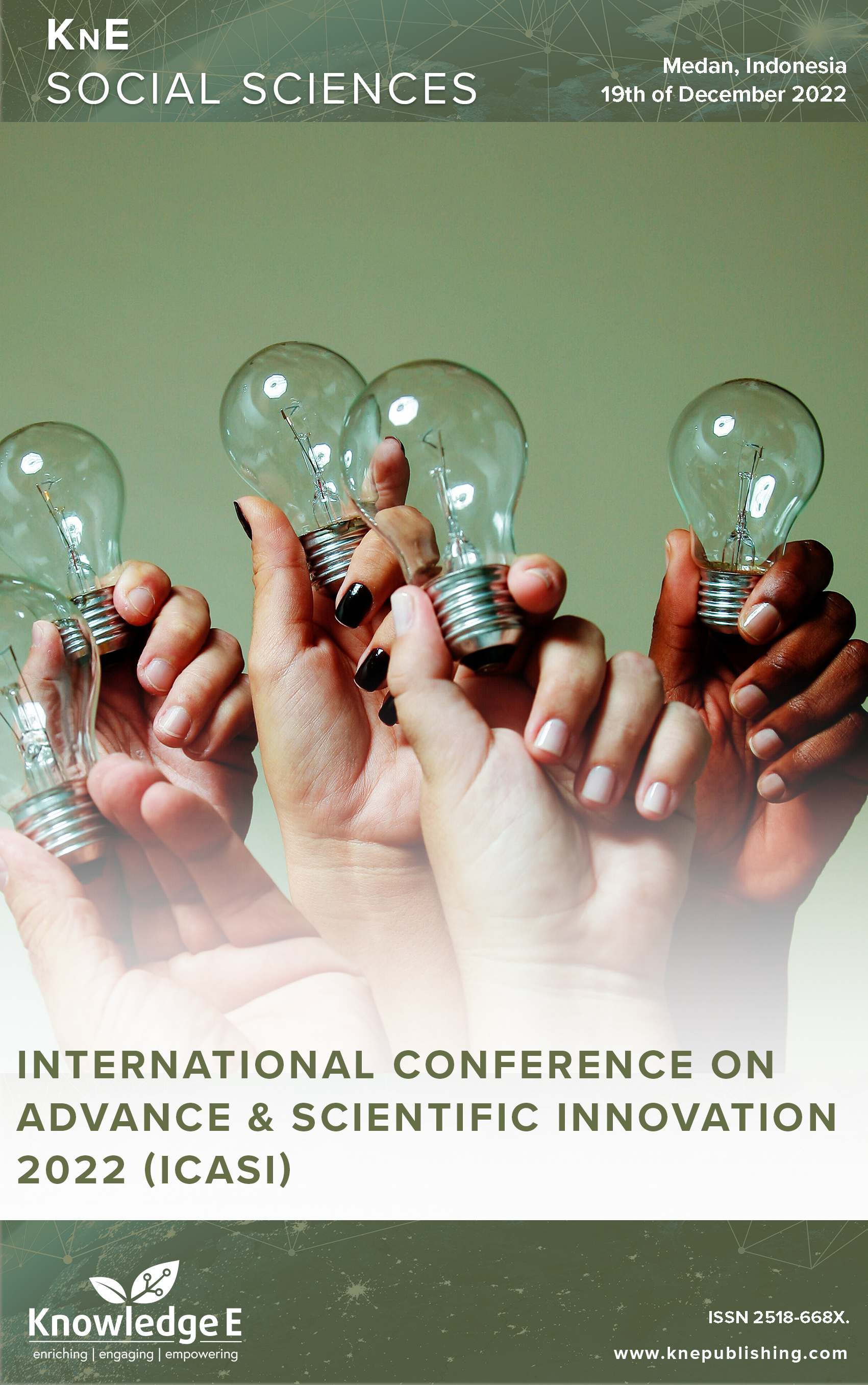K-Means Method for Clustering Average Length of School (ALS) in Central Java
DOI:
https://doi.org/10.18502/kss.v8i9.13319Abstract
Average School Length (ALS) represents the level of performance of every person in a school region. The more years of education, the better the education obtained by the population; therefore, it becomes more essential as it can demonstrate the quality of the human resources in a given region. In addition, extensive research implies that the average length of schooling influences economic growth considerably. If the average length of education improves, then the number of unemployed and poor in an area decreases and affects economic growth positively and significantly. The study’s goal was to carry out an investigation utilizing artificial intelligence in the form of a cluster mapping on the averages of regeneration in central Java. This needs to be done to get a macro view of the level of development of the average school years through regional mapping over the last few years. The data set used can be found on the website of the Central Java Provincial Statistics Agency, which is the subject of the 2017-2019 average school year by sex. The solution approach is k-means, which is part of the data collection process. High and low clusters are the number used in this investigation. Prior to the k-means approach, pre-processing is conducted out by taking from 2017-2019 the average RLS number based on gender. The results of the computed average value were analyzed with k-means. The study found that out of 35 provinces, eight (23%) provinces were of the high cluster (cluster 1) and 27 of the low cluster (cluster 0) (77%). More than 70% of Central Java regions have remained common ALS, according to results.
Keywords: K-Means, clustering, ALS
References
[2] Wabang K, Rahma Y, Widodo AP, et al. “Tata Kelola Teknologi Informasi Menggunakan Cobit 2019 Pada Psi Universitas Muria Kudus.” Jurnal Teknol dan 2021;VII(3):275–282.
[3] Sugiyono. “Metode Penelitian Bisnis (Pendekatan Kuantitatif, Kualitatif, Kombinasi dan R&D).” in Metodelogi Penelitian, 2017.
[4] D. Steuperaert, “COBIT 2019: A significant update.” EDPACS, https://doi.org/10.1080/07366981.2019.1578474.
[5] ISACA. COBIT 2019 Introduction and Methodology. ISACA; 2019.
[6] Kasma VS, Sutikno S, Surendro K. “Design of e-Goverment security governance system using Cobit 2019.” Int Conf ICT Smart Soc. 2019.
[7] Fikri AM, Priastika HS, Octaraisya N, Sadriansyah S, Trinawati LH. “Rancangan Tata Kelola Teknologi Informasi Menggunakan Framework COBIT 2019 (Studi Kasus: PT XYZ).” Inf Manag Educ Prof J Inf Manag. https://doi.org/10.51211/imbi.v5i1.1410.
[8] Gusni RS, Kraugusteeliana K, Pradnyana IW. “Analisis Tata Kelola Keamanan Sistem Informasi Rumah Sakit XYZ Menggunakan Cobit 2019 (Studi Kasus pada Rumah Sakit XYZ).” in Konferensi Nasional Ilmu Komputer (KONIK) 2021; 2021.
[9] Riantini FI, Mulyana DI. Implementasi Tata Kelola Teknologi Informasi Menggunakan Framework Cobit 5 Pada Direktorat Jenderal Bea Dan Cukai. Cki Spot. 2019;12(1):1– 14.
[10] Made IG, Dharma S, Made IG, Sasmita A, Suwija IM. “Evaluasi Dan Implementasi Tata Kelola Ti Menggunakan Cobit 2019 (Studi Kasus Pada Dinas Kependudukan Dan Pencatatan Sipil Kabupaten Tabanan).” J Ilm Teknol dan Komput. 2021;2(2).
[11] ISACA. COBIT 2019 Framework Introduction and methodology. 2019.
[12] Safitri A, Syafii I, Adi K. Measuring the performance of information system governance using framework COBIT 2019. Int J Comput Appl. 2021;174(31):23–30.
[13] Atrinawati LH, Ramadhani E, Fiqar TP, Wiranti YT, Abdullah AINF, Saputra HMJ, et al. Assessment of process capability level in university XYZ based on COBIT 2019. J Phys. Conference Series; https://doi.org/10.1088/1742-6596/1803/1/012033
[14] Gerl A, Von Der Heyde M, Groß R, Seck R, Watkowski L. “Applying COBIT 2019 to IT Governance in Higher Education Establishing IT governance for the collaboration of all universities and universities of applied sciences in Bavaria.” Informatik 2020, 2020.
[15] Belo GI, Wiranti YT, Atrinawati LH. “Perancangan Tata Kelola Teknologi Informasi Menggunakan Cobit 2019 Pada PT Telekomunikasi Indonesia Regional VI Kalimantan.” Jusikom Prima. Jurnal Sist Inf Ilmu Komput. Prima; 2020.
[16] Gerl A, Von Der Heyde M, Groß R, Seck R, Watkowski L. “Applying COBIT 2019 to IT Governance in Higher Education.” Inform. 2020 - Gesellschaft für Inform., 2021.
[17] Ishlahuddin A, Handayani PW, Hammi K, Azzahro F. “Analysing IT governance maturity level using COBIT 2019 framework: A case study of small size higher education institute (XYZ-edu).” in 2020 3rd International Conference on Computer and Informatics Engineering, IC2IE 2020, https://doi.org/10.1109/IC2IE50715.2020.9274599.
[18] Wardani S, Puspitasari M. Audit Tata Kelola Teknologi Informasi Mengunakan Framework Cobit Dengan Model Maturity Level (Studi Kasus Fakultas Abc). J Teknol. 2014.
[19] Nagel RG, Pasyha G, Wagiu EB. “Analisa Tata Kelola Sistem Informasi Universitas Advent Indonesia menggunakan Framework COBIT 5 (Domain EDM).” Semin Nas Inform. 2020.
[20] White SK. What is COBIT? A framework for alignment and governance. CIO (Framingham Mass). 2019.
[21] Nachrowi E, Nurhadryani Y, Sukoco H. “Evaluation of governance and management of information technology services using Cobit 2019 and ITIL 4.” J RESTI (Rekayasa Sist dan Teknol Informasi), 2020.

